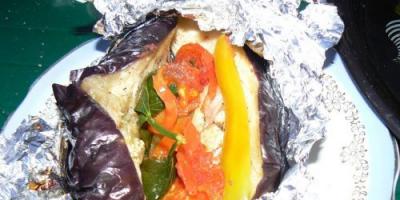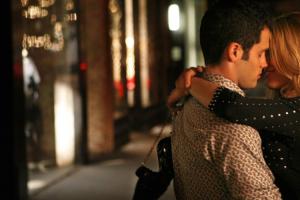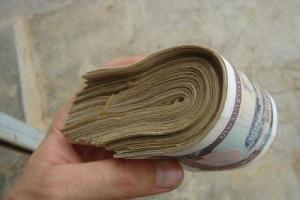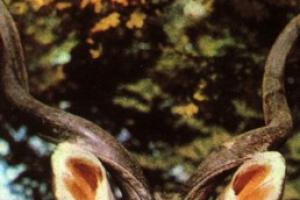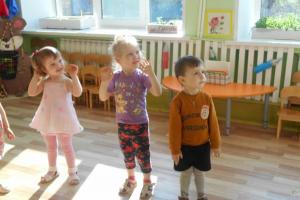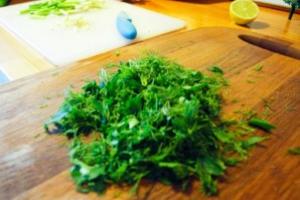Heine Heinrich (1797-1856)
German poet and prose writer, critic and publicist, who is put on a par with I.V. Goethe, F. Schiller and G.E. Dessing. Born in Düsseldorf into a Jewish family. The mixed education he received undoubtedly contributed to his generally cosmopolitan worldview. After a private Jewish school, he studied at the Lyceum, where lessons were taught in French and even Catholic priests.
Heine's attempts to engage in commerce, first in Frankfurt am Main, then in Hamburg, were unsuccessful.
He studied in Bonn, Göttingen and Berlin, where he was strongly influenced by Hegel. As a result, returning to Göttingen, in 1825 he received the title of Doctor of Law. After Prussia took away civil rights from Jews in 1823, Heine became a sworn enemy of the Prussian regime, although, following the example of many contemporaries, he accepted Lutheranism.
The official change of religion did not give him any advantages, because his writings irritated the authorities much more than his religion.
In Heine's sphere of interests, literature always occupied the main place. In Bonn he met A.V. Schlegel and attended his lectures; In Berlin, an already accomplished writer, he was a member of the literary circle of Rachel von Enze. Heine published his first poems in 1817; the first collection “Poems” was published in 1821, and the first poetic cycle “Lyrical Intermezzo” - in 1823. He also tried his hand at political journalism.
After university, Heine intended to practice law in Hamburg, but preferred literary activity.
The first of the four volumes of his Travel Pictures brought him wide fame, and henceforth he earned his living from literary work. During these years, Heine traveled a lot, spending three or four months in England, then in Italy, where he stayed a little longer; These trips served as material for the following volumes of Travel Pictures. At the same time, he revised his poems and as a result compiled the “Book of Songs”; many poems were set to music by F. Schubert and R. Schumann.
In 1829, Johann Cotta invited Heine to become a co-editor of his Munich newspaper “New General Political Annals”. Heine accepted the offer, but already in 1831, counting on a professorship (he never received it), he left the post of editor.
The July Revolution of 1830 gave him the answer to the question of what to do next: in May 1831 he left Germany and settled permanently in Paris. In 1834, Heine met a young saleswoman at Cresence, Eugenie Mira, whom he later immortalized in poetry under the name of Matilda. In 1841 they got married.
In 1835, in Prussia, the Reichstag banned the works of a number of politically progressive authors of Young Germany, including Heine. Unable to gain the favor of official Prussia, the poet did not get along with the German revolutionary reformers, whom L. Berne united around himself in Paris.
In the same 1840, Heine resumed various publications about the life of Paris in the General Newspaper, which in 1854 were published as a separate book called Lutetia. These were his last experiences in the field of journalism; he began to write poetry, which again took a dominant position in his work, as evidenced by the books “Atta Troll”, “New Poems”, etc. that were published one after another.
By that time, the poet's health was severely undermined: family quarrels that followed the death of his uncle in 1844 aggravated the illness, which in 1848 confined Heine to bed. This misfortune, however, did not put an end to his literary activity. Although his illness made his life a misery, Heine's creative energy increased immeasurably, as evidenced by Romansero and Poems of 1853 and 1854, followed by another collection published posthumously.
Christian Johann Heinrich Heine (1797-1856) is an outstanding German poet, one of the brightest representatives of the romantic era, publicist and critic. He knew how to write clearly and briefly about deep problems, imparting a previously unusual elegance and lightness to his native language. Dozens of musical works were created based on Heine's poems by the world's leading composers.
Childhood and youth
Heinrich Heine was born on December 13, 1797 in Düsseldorf, Germany, into a Jewish family. His father Samson was engaged in trade in the Rhineland, which was quite developed by the standards of that time, and his mother Betty was a fairly educated woman and was keen on the ideas of Rousseau.
The poet's early childhood was spent under French occupation caused by the Napoleonic Wars. At this time, liberal ideas and principles that Heine so actively absorbed in his youth were actively exported from France to other parts of Europe. He was grateful to the French authorities for equalizing the rights of Jews with other peoples.
Henry began his education in a Catholic monastery. At the age of 13, he began studying at the lyceum of his native city, and at the age of sixteen the young man was sent to study in the office of a wealthy banker from Frankfurt. Then the young businessman learned the secrets of trade in the company of his uncle Solomon in Hamburg. Despite this bias in education, Heinrich was attracted to something completely different. He successfully failed his trust to manage a small company and even failed to properly keep accounts, which led to a conflict with a relative.
With the financial support of his uncle, he entered the University of Bonn, from where he soon moved to study at the University of Göttingen. In 1821, Heine transferred to the University of Berlin, where he was deeply impressed by a lecture on the philosophy of Hegel, but it was at the University of Göttingen that Heinrich defended his dissertation and received the title of Doctor of Law. At the same time, he was forced to convert to Lutheranism, since diplomas were not issued to Jews. Heine expressed himself bitterly about this: “I wish all renegades a mood similar to mine.”.

Aspiring poet
Unhappy, unrequited love for his own cousin prompted the aspiring poet to write a series of lyrical poems, published in 1817 in the pages of the Hamburg Guardian magazine. In 1820, a collection of early lyrics, “Youthful Sufferings,” was published. During his stay in Berlin, Heine managed to get into secular society and meet many luminaries of German art. To earn extra money, he begins selling his poems to newspapers, but does not find much response from either ordinary readers or critics. Among others, “Ballad of the Moor”, “Terrible Night”, “Minesingers” were published at this time.
In 1826, travel notes “Travel to Graz” were published, which brought the author great fame. Following them, the first part of “Travel Pictures” appears, and the following year the collection of lyrical works “Book of Songs” is published. She rightfully won the love of readers with her rich palette of human feelings and romantic excitement. The hero of the work is a young man who perceives the surrounding reality very emotionally and at the same time tragically.
“The Book of Songs” consists of 4 sections, the most romantic of which is the first - “Youthful Sufferings”. The second section, “Lyrical Intermezzo,” is filled with a light sadness recognizable to the poet. Some works from it are well known to the Russian reader, thanks to the translations of M. Yu. Lermontov.
In 1826-1831, Heine worked on a series of artistic essays called “Road Pictures”, in which the author appears as an interested observer, openly sharing with his audience his opinion on various aspects of German life.
Parisian period
The July Revolution in France (1830), which forced Charles X to leave the throne and returned Louis d'Orléans to the country, became a triumph of popular sovereignty over the divine right of the monarch. The German poet was deeply imbued with the principles that gave “three glorious days”, and in 1831, on the wave of then fashionable emigration, he moved to Paris. Here, unlike in his homeland, he does not experience censorship and can freely engage in creativity. After that, he will visit Germany only twice - once to visit his mother, and then to come on publishing business.

During this period of creativity, Heine wrote a series of articles published in a single book entitled “French Affairs.” In them, the author, disillusioned with socialist ideas, compares them with utopia. In 1834, the book “For History, Religion and Philosophy in Germany” was published, based on his lectures. At the same time, the poetry collection “Different” appeared. In 1840 he completed work on the book “About Bern”, which caused a critical reaction among many readers. The public's disapproval was caused by the author's division of all people according to the degree of religious freedom into Nazarenes and Hellenes.
The forties of the 19th century were marked by the writing of one of Heine’s best poems - “Germany. Winter's Tale." Henry had a very hard time parting with his homeland, a connection with which he always felt on a subconscious level. He was not allowed there for political reasons, and the author’s creative nature responded to this by creating a magnificent work about his native country. In Heine's collection of works there is another brilliant poem about Germany - "The Silesian Weavers", which was a response to the famous workers' uprising.
In 1851, the last collection of poems, Romansero, was published. It includes works written during a period of serious illness. It is not surprising that many of them are imbued with deep pessimism and tragedy. The collection consists of three books. In the first, the author returns to the ballad genre; in the second, entitled “Lamentations,” he responds to the revolutionary events in Europe, bitterly regretting the defeat of the revolutionaries. In the third book, the poet addresses the topic of Jewish folklore.

Personal life
Heinrich Heine was married to Cressenia-Engenie-Mira, whom he stubbornly called Matilda. She was of peasant origin, having moved to Paris to live with her aunt as a teenager. At the time of her marriage, she was illiterate and could not read at all, which was in sharp dissonance with the highly educated Heine. Despite all the efforts of her husband, she remained uneducated until the end of her life and did not understand her husband’s occupation at all. Many of Henry's acquaintances condemned this marriage, but the poet was adamant.
Since 1846, Heinrich became seriously ill - spinal cord paralysis. In 1848 he visited the street for the last time. For all the remaining years, as a result of a serious illness, Heine would be bedridden, which he jokingly called a “mattress grave.” At this time, many friends will visit him, among whom were O. de Balzac, J. Sand, R. Wagner. One of the good acquaintances of the German poet was K. Marx, who was a distant relative of him. The creator of the scientific theory of communism recognized Heine's talent and constantly called on him to put it at the service of freedom.
Until his last breath, Heine had a brilliant sense of humor, so during Marx’s next visit, when the immobilized poet was carried into the bathroom by the maid, he said: “You see, women still carry me in their arms”. Heinrich Heine died on February 17, 1856 in Paris, his remains rest in the Montmartre cemetery.
What features of human vision make it possible to use irreversible algorithms for compressing graphic images? without loss of quality? (p. 91)
Well, how can you compress with losses (irreversibly), but “without loss of quality”? It’s not for nothing that professionals do not recommend editing and saving photos in JPEG format many times.
[Image of item NOT] (p. 94)
We will tell... about the so-called SR trigger (p. 105)
The number of a memory cell is called its address... A certain set of zeros and ones is written into any cell - the so-called machine word. (p. 107)
We get 01010101 + 00111101 = 10010010. But a 1 in the first digit indicates that the result is a negative number. (p. 115)
Not in the first (second from the right), but in the eldest, that is, in the seventh (it is customary to number the digits from zero from right to left).
Then normalize the result, if the amount is more than 1 or less than 0.1. (p. 115)
According to the IEEE 754 standard, the mantissa must be in the range 1 ≤ m. The integer part of the mantissa (implicit unit) is not stored in memory.
But only 24 digits fit into the mantissa's bit grid... the highest possible order is 63. (p. 117)
First of all, play tic-tac-toe according to the program that we have compiled. To do this, enter it... [the following is a five-page program] (p. 314)
There's nothing about the program itself that makes it worth the time spent typing. Then why?
The German poet Heinrich Heine is known throughout the world. His biography is filled with many travels and debauchery. However, the poet’s fate was not easy. Many of his works did not receive recognition during his lifetime, and Henry’s financial situation and health last years were quite deplorable. Despite difficult conditions, he continued to create. Today, the whole world loves a poet like Heinrich Heine. His biography and work will be discussed in our article.
Origin, childhood
The future poet was born in Düsseldorf on December 13, 1797. Heinrich Heine spent his childhood here. The biography of his youth is connected specifically with Düsseldorf. Samson Heine, his father, was a textile merchant. And Betty, the boy’s mother (her portrait is presented below), was an enlightened woman for those times. She was fond of the works of Jean-Jacques Rousseau. Betty took great care in raising her child. This woman had no doubt about Henry’s great future. At the same time, she had a very definite idea of what her son could become. He could choose to become a general or become a financial genius. Becoming a lawyer was another option.

Heinrich grew up, and so he entered the lyceum. At the local Catholic Lyceum, Heine developed a love for worship, characterized by pomp and solemnity. She did not leave the whole life of such a poet as Heine. Henry's biography and work prove this.
Communication with Simon Geldern and Zefchen
At this time, he began to communicate closely with Simon Geldern, his uncle on his mother's side. He noticed that the boy had clearly expressed inclinations towards humanitarian subjects. Simon Geldern gradually began to introduce Heinrich to works of world literature. The boy read the works of Cervantes, Swift and other authors.
At the age of 15, the future poet met Zefchen, a simple peasant girl. He immediately became friends with her. This girl often told various beliefs and legends that existed among the people, which complemented the literary education Heine received. It is possible that Henry’s interest in folklore was awakened precisely thanks to her. This was subsequently reflected in the poetic masterpieces included in many of Heine’s collections.
The political situation: how Heinrich Heine perceived it
The short biography and work of this poet are closely related to the political situation of those years. Young Heine was infected with patriotism during the war with the French. However, he cooled down very quickly after the reaction defeated Napoleon. With the arrival of the Prussians in the Rhine Province, the former feudal-bureaucratic order reigned again. The equality of Jews with all other religious groups, proclaimed by Napoleon, was destroyed. All these events in political life left a big mark on Heine’s spiritual formation, as well as on his work. The poet grew up in the Rhine Province, which was considered the advanced part of Germany in terms of industry. Henry's parents, who dreamed of their son becoming a general in Napoleon's army, after Bonaparte's defeat began to think about a career as a merchant, despite the fact that the future poet did not show much hope in this regard.
Moving to Frankfurt, living in Hamburg
Samson Heine went with his son to Frankfurt in 1815. He wanted to get him a job as a clerk in a grocery warehouse. However, Henry did not last long in the stifling atmosphere of trade. After some time he ran away. This greatly upset his mother, although she never stopped believing that her son had a great financial future. The woman decided to send him to the care of Solomon Heine, another of Heinrich's uncles, who lived in Hamburg and was a financial tycoon. This man took an active part in his young nephew. Henry came to his uncle in July 1816. And in 1818 he was already the head of his office called “G. Heine and Co.”
Love and its reflection in the poems created by Heinrich Heine
Biography, summary works and Interesting Facts about the poet give us some insight into his personal life. It is known that in Hamburg our hero showed himself not only in financial sector. He became close friends with Amalia, Solomon's daughter. This girl inspired him to write a number of poems, which were later included in the “Book of Songs,” published in 1827 (its first edition is presented below).

However, the love for Amalia was not mutual. After 3 years, the girl married Friedlander, a prominent merchant. It was very difficult for Heine to fight the despair that gripped him after Amalia's refusal. He abandoned his commercial venture, which promised a lot of hope.
Heine's poetic works of this period, as well as his letters, the main theme of which was his unhappy love for Amalia, are imbued with a “romance of horror” and a gloomy mood. They contain motifs of ominous dreams, a double, love-death, etc., characteristic of the period of late romanticism.
Study at the Universities of Bonn and Göttingen
After some time, Heinrich entered the University of Bonn, the Faculty of Law. This happened largely under the influence of Betty, his mother. During his student years, Henry attended lectures and also took part in ugly revelry, which undermined his already weak health. The young man became interested in literature. The course on its history was taught at this university by August Schlegel. It was he who instilled in young Heine a taste for Byron, Shakespeare and the East. However, Heine did not stay long at the University of Bonn.
On October 4, 1820, he became a student at another educational institution - the University of Göttingen. However, he could only hold out there for 14 months. A duel with a classmate (or rather, her attempt) became the reason for Heine’s expulsion. It was arranged for some minor reason.
Continuing education at the University of Berlin
Heinrich Heine continued his education at the University of Berlin at the end of February 1821. Here he leads a social life. Heinrich makes various acquaintances with many German writers. In the same year, Heinrich began selling his poetic works to newspapers. However, Heine's poems are not noticed by either readers or critics. Nevertheless, the Berlin press publishes the works "Ballad of the Moor", "Terrible Night", "Minnesingers" and others.
Tragedies and the first collection of poems
It was at this time that the news reached him that Amalia Heine had gotten married. This was the reason that the poet began to participate in various orgies and revelries. With all his strength he tried to get rid of the melancholy that gripped him. Nevertheless, he constantly created new poetic works. The first publications of his creations date back to this time. After some time, the tragedies “Ratcliffe”, “Almanzor”, as well as a collection of poems called “Lyrical Intermezzo” appeared in print. Thanks to this collection, published in 1823, Heine gained fame in literary circles.
Political views, moving to Cuxhaven
In the same year, Henry’s political worldview finally took shape. The Prussian authorities take away many political rights from Jews. Heine begins to actively protest against the monarchical regime.
Heine's new poems were met with criticism rather harshly. She saw in the works of the young poet dissatisfaction with the existing world order. Heine, being in a deplorable state of mind, began to dream of leaving for Arabia. However, in reality he went to Cuxhaven, a small resort town. Here he tried to improve his health at least a little.
New wanderings
Somewhat later, Heinrich Heine went to Hamburg. Biography, interesting facts and new works of this period will be briefly presented by us. On the way, the poet visits his family in Luneburg. However, his mood remains very gloomy. Leaving Hamburg, he goes to Berlin, and then, in January 1824, goes to Göttingen.

After waiting for the end of the holidays, in September 1824 the poet made a trip to the Harz. He wants to travel all over Thuringia. Heinrich Heine visits Weimar. Here he meets J.V. Goethe, something he had long dreamed of. Unfortunately, communication with him was limited to only this one meeting. Didn't see Goethe again G. Heine. His biography, however, is marked by friendship with many famous writers and artists. Henry will meet many of them a little later.
Completion of studies at the institute, new works
In the spring of 1825, Heine passed the final exams at his university with great difficulty. He becomes a 3rd level Doctor of Law. Immediately after this, our hero accepts Lutheranism. Already in Hamburg he meets the year 1826. The first volume of “Travel Pictures” is published here, as well as a cycle of poems called “Return to the Homeland” and the first part of the cycle “North Sea”. A little later, the second volume of “Travel Pictures” appears. It aroused very sharp controversy among critics and in the press. It turned out that Heine's style is distinguished by daring license. The poet decided that it would be better to leave Hamburg for a while. He goes to London. However, Henry returns quite quickly to publish the "Book of Songs". It attempted to collect into one whole all previously created poetic works.
Working at a newspaper, traveling around Italy
In 1827, Heine was offered to become the editor of the newspaper "Political Annals", published in Munich. The poet settles in this city for six months. Then he goes on a trip to Italy. In this country he is caught by the news of the death of Samson Heine, which occurred in Hamburg. Returning from Italy, Heinrich publishes the third volume of Travel Pictures.
Moving to Paris, continuing creative activity

The revolution in Paris takes place in July 1830. Henry strives there with all his heart. His creative activity was already gaining momentum by this time. After the poet's new masterpiece, the book " New spring", Heine moved to Paris. In the French capital, he met such artists as Berlioz, Rossini, Chopin, Liszt, Humboldt. He published his works in two languages: German and French.
His following works were also published in Paris: “Florentine Nights”, “On the History of Religion and Philosophy in Germany”, “Romantic School”. They drew attacks from both censors and critics. Heine's circle of acquaintances in the French capital, however, was steadily expanding. Henry's friends are T. Gautier, A. Dumas Sr., A. de Vigny, O. Thierry, J. Sand and others.
Meeting Matilda Mira and Rothschild

In 1835 it took place an important event in Heine's personal life. His biography was marked by his acquaintance with his future wife Matilda Mira (pictured above). However, he entered into a legal marriage with her only in 1841. Using the connections of Solomon, his uncle, Henry met Rothschild around the same time. The latter infected the poet with a passion for stock market speculation. Heine worked on them in his free time from literary works, but was not very successful.
Difficult period in Heine's life
In 1838, the poet's financial situation became catastrophic. He had to accept the French government's allowance, which was paid to emigrants, because Henry was in Paris in this capacity. In addition, Heine had to enter into an enslaving agreement with Julius Campe, a French publisher. According to its terms, the publisher was given exclusive rights to Heinrich's works for 11 years. A subsidy from Solomon, his uncle, improved Heine's position to a certain extent. His biography would probably have turned out differently if not for the influence and help of this man. Solomon never stopped caring for his talented nephew. Material adversity and intense creative activity led to Henry’s health rapidly deteriorating. He began to see worse and worse, moved with great difficulty, but did not stop working. The poem "Atta-Troll" appeared in 1842. In 1844, Heine's collection "New Poems" was published, as well as the poem that became very famous, "Germany. A Winter's Tale."
Last walk in Paris
News soon arrived from Hamburg of the death of Solomon Heine. The biography, briefly outlined by us, from this moment becomes truly tragic. Despite ardent assurances, Solomon left his nephew an inheritance of only 8 thousand francs. This greatly undermined Henry's already weak health. In May 1848, after drinking a hefty dose of opium to ease the pain that tormented him, Heine walked around Paris for the last time. Returning home, he never left his home. Here, in forced confinement, the poet was often visited by A. Dumas, Beranger, T. Gautier and J. de Nerval.
last years of life
In 1851, Heinrich Heine created his third and last book of poems entitled “Romansero”. His biography at this time was also marked by the continuation of work on “Memoirs,” which began back in 1840. About a year before Henry’s death, Camilla Selden, a big fan of his work, visited Heinrich. She managed to awaken the last passion in the soul of the dying poet. Camilla, as well as Matilda, Heine’s wife, did not leave him until the poet’s death. Henry died on February 17, 1856. His remains are located in the Montmartre cemetery. and were among those who saw off the poet on his last journey.

Today, many are interested in a biography of a poet like Heinrich Heine. We briefly talked about his life and creative path. To continue your acquaintance, we recommend turning to his poems. After all, it was in them that the personality of such a poet as Heinrich Heine was fully reflected. The biography briefly described by us gives only the most general ideas about inner world this author. And yet he is, of course, very rich. It is not without reason that Heine’s biography in Russian is of interest to our compatriots, despite the fact that many great poets and writers were born in our country.
USA
Detention in a psychiatric clinic
Suffocation and cardiac arrest
Ed Gein(English) Ed Gein), full name - Edward Theodor Gein(English) Edward Theodore Gein); genus. (August 27, La Crosse County, Wisconsin, USA - July 26, Madison, Wisconsin, USA) one of the most famous murderers in US history, despite the fact that he only had two proven murders, the enormity of which shocked the world.
Biography
Childhood
Gein was born in La Crosse County, Wisconsin on August 27, 1906. Gein's father was an alcoholic who was systematically unemployed. Even though Gein's mother despised his father, they did not formally end their marriage due to religious beliefs. Gein's mother, Augusta, ran a small grocery store and later convinced her husband to move to a farm in Plainfield.
Augusta grew up in a devout family who were ardent opponents of anything related to sex. Augusta saw only dirt, sin and lust in everything. Augusta forbade Ed to communicate with other children and constantly forced him to do hard work on the farm. Fanatically religious Augusta constantly read the Bible to Ed and his brother, called Augusta the city a “hell hole” and convinced the children that the whole world was mired in sin and debauchery, all women except her were whores.
When Gein was 10 years old, he had an orgasm while watching his mother and father slaughter a pig. One day, Augusta saw him masturbating and scalded him with boiling water as punishment. Despite this, Ed considered his mother a saint. At school, Gein was bullied by his classmates.
1940-1946
Gein's father, George, dies in 1940 of pneumonia. Augusta's influence on Ed becomes very strong. Ed's brother, Henry Gein, concerned about the undue influence of his bigoted mother on Ed, speaks critically of her several times. He soon dies while putting out a fire in 1944, which he put out together with Ed (there is an assumption that Ed killed his brother, this is indicated by some oddities noted by the police who examined Henry's corpse).
A year later, August suffered a stroke and found herself bedridden. Ed looked after her around the clock, but she was still unhappy. She constantly yelled at her son, calling him a weakling and a loser. From time to time she allowed him to lie in bed with her during the night.
Augusta dies on December 29, 1945. Ed, now completely alone, begins to voraciously read books on anatomy, stories of Nazi atrocities during World War II, various information about exhumations, and he also enjoyed reading the local newspaper, especially the obituary section. The neighbors didn't think Gein was crazy, just a "a little strange" harmless eccentric, and left him to sit with the children, to whom Gein would sometimes retell what he had read on topics that he was obsessed with. Soon Gein moves from theory to practice - he begins to visit cemeteries at night, dig up corpses and butcher them. Often guided by information gleaned from obituaries in the local press, he especially enjoyed tearing up the fresh graves of women, although later during the investigation he swore that he did not perform any sexual manipulations with the corpses, “they smelled too bad,” Gein said. Gein took some parts of the corpses home, and soon he had a peculiar collection of skulls and severed heads, which he hung on the walls. Gein also made himself a suit from women's leather, which he wore around the house.
Even stories about strange things happening on his farm did not bother anyone. Local children who looked into the windows of Gein's house talked about seeing human heads hanging on the walls. Edward just laughed and said that his brother served during the war somewhere in the South Seas and sent him these heads as a gift. Nevertheless, rumors spread around the town about strange objects in Gein’s house, and he himself smiled kindly and nodded his head when asked about the severed heads that he allegedly kept at home. Nobody thought that this could be real.
1947-1956
In 1947, an eight-year-old girl was found murdered in the area. Presumably this murder was committed by Gein. The only evidence the police found were tire tracks from a car that later turned out to belong to Gein. Gein's involvement has not been proven.
In 1952, two tourists who stopped for a small picnic near Gein’s house disappeared. Their corpses have not yet been found. Gein's involvement in the crime has not been proven, although he was suspected of their murder.
In 1953, a fifteen-year-old girl was found murdered. Gein's involvement has also not been proven, but some elements of coincidence with the first murder are visible quite clearly.
In 1954, Gein kills Mary Hogan, the owner of a local tavern. Gein managed to move unnoticed overweight woman to her home across the city, where the woman was dismembered. He dismembered her and kept her in his home. Mary was reported missing. Gein joked that she was staying at his house. Mary disappeared from the motel, leaving behind only puddles of blood, so Ed's jokes about the missing woman seemed tasteless to everyone. Nobody took him seriously.
Arrest. Court. Death.
On November 16, 1957, the owner of a hardware store, 58-year-old widow Bernice Warden, disappeared without a trace. In the afternoon, her son Frank Worden returned from hunting and stopped at the store. He saw that his mother was not at home. Entrance and backdoor remained unlocked. Frank discovered something that scared him terribly - a trail of blood stretching from the display window to the back door. Quickly examining the room, Frank found a crumpled receipt lying in the backyard. The receipt was in the name of Edward Gein.
The police decide to search Gein's house, and immediately make the first terrible discovery - the gutted and mutilated corpse of Bernice Worden in Gein's barn. The corpse was so disfigured that the sheriff initially mistook it for a deer carcass. Much more terrible discoveries awaited the police in the house of Ed Gein, where there was a terrible stench. Masks made of human skin and severed heads were hung on the walls; an entire wardrobe was also found, handmade from tanned human skin: two pairs of pants, a vest, a suit made from human skin, a chair upholstered in leather, a belt made from female nipples, a plate for soup, made from a skull. But that was not all. The refrigerator was filled to the top with human organs, and a heart was found in one of the pans. Later, Gein admitted that he dug up from the graves the bodies of middle-aged women who reminded him of his mother.
During hours of interrogation, Gein confessed to the murder of two women - Bernice Worden and Mary Hogan. (However, Hogan Gein confessed to the murder only a few months later). His trial began.
While Gein's trial was going on, local boys began throwing stones at the windows of the House of Horrors. The townspeople considered the farm a symbol of evil and depravity and avoided it at all costs. The authorities decided to sell the estate at auction. People protested but could not do anything about it. On the night of March 20, 1958, Gein's house mysteriously burned to the ground. There is a version that it was arson, but the perpetrators were never found. When Hein, imprisoned at the Central State Hospital, learned about the incident, he uttered only three words: “That’s the way it should be.”
The Gein property was purchased by real estate dealer Edmin Shi. Within a month, it had destroyed the ashes and the nearby undergrowth of 60,000 trees.
Ed Gein's car, which he drove on the day Bernice Warden was killed, has been auctioned off. 14 people fought for this lot, and, in the end, Ford went for a lot of money at that time - $760. The buyer chose to remain unknown. The buyer may have been the organizer of a fair in Seymour, where a Ford car appeared as an attraction called "Ed Gein's Ghoul Car."
More than 2,000 people paid 25 cents to see the car during the first two days of the show.
Cashing in on Gein's notoriety was met with outrage by the townspeople of Painefield. At the Washington State Fair in Slinger, Wisconsin, the car was on display for four hours before the sheriff arrived and closed the ride. After this, Wisconsin authorities banned the car from being shown. The offended businessmen went to southern Illinois, hoping for understanding. The further fate of the car is unknown.
In accordance with the court verdict, Gein was declared insane and sent to compulsory treatment in mental asylum, where he died in 1984 of cancer and was buried in the Planfield City Cemetery.
In popular culture
To the cinema
- Option to retell the life of Edward Gein as the most cruel serial killer throughout American history was made in the film “Ed Gein: The Butcher of Plainfield” and in the film “Ed Gein. Monster from Wisconsin."
- Elements of Ed Gein's biography are included in famous films - such as Psycho by Alfred Hitchcock, The Silence of the Lambs by Jonathan Demme, and the Texas Chainsaw Massacre series of films.
In music
- Song " Nothing to Gein", by the group "Mudvayne" tells the story of Ed Gein.
- Song " Nipple Belt", by Tad, tells the story of Ed Gein.
- Song " Edward Gein", by the group "Fibonaccis" tells the story of Ed Gein.
- Song " Dead Skin Mask", the group "Slayer" tells the story of Ed Gein.
- Song " Ballad of Ed Gein" - the group "Swamp Zombies" tells the story of Ed Gein.
- Song " Ed Gein" - the group "Killdozer" tells the story of Ed Gein.
- Song " Ed Gein" - the group "Macabre" tells the story of Ed Gein.
- Song " Plainfield" - the group "Church of Misery" tells the story of Ed Gein.
- Song " Sex Is Bad Eddie" - the group "The Tenth Stage" tells the story of Ed Gein.
- Song " Skinned" - the group "Blind Melon" tells the story of Ed Gein.
- Song " The Geins" - the group "Macabre Minstrels" tells the story of Ed Gein.
- Song " Torn" - the group "Maladiction" tells the story of Ed Gein.
- Song " Young God"by Swans" also talks about the life of Ed Gein.
Links
- Extracts from the life of Ed Gein, facts and motives, biography of life and crimes
- (English)
| The Texas Chainsaw Massacre (film series) | |
|---|---|
| Classic series | The Texas Chainsaw Massacre (1973) The Texas Chainsaw Massacre 2 (1986) Leatherface: The Texas Chainsaw Massacre 3 (1989) The Texas Chainsaw Massacre: The Next Generation (1994) |
| Remakes | Texas Chainsaw Massacre (2003) Texas Chainsaw Massacre: The Beginning (2006) Texas Chainsaw Massacre 3D (2010) |
| Creators | Tobe Hooper Dennis Hopper Viggo Mortensen Renee Zellweger Matthew McConaughey Jessica Biel Andrew Bryniarski |
| Miscellaneous | Chronology Texas massacre· Leatherface · Comics · Ed Gein · Cannibalism |
Wikimedia Foundation. 2010.
See what "Gain" is in other dictionaries:
- (from the Greek ge earth). Dark brown substance, main component arable land. Dictionary of foreign words included in the Russian language. Chudinov A.N., 1910 ... Dictionary of foreign words of the Russian language
Ed Gein Ed Gein Approx. 1957 Birth name... Wikipedia
- ... Wikipedia
- ... Wikipedia
GAIN- (Gheyn), Matthias Fanden, b. Apr 7 1721 in Tirlemont (Brabant), d. June 22, 1785 in Leuven; for many years he was organist and city bell ringer (Carillonneur), in Leuven; wrote Fondements de la basse continue (two lectures and 12 small sonatas for organ... Riemann's Dictionary of Music

